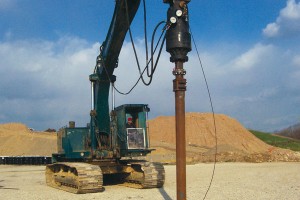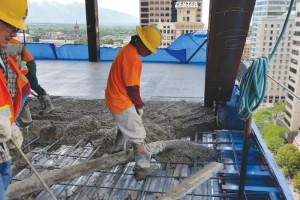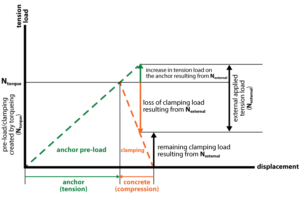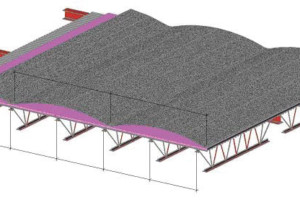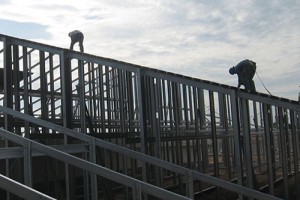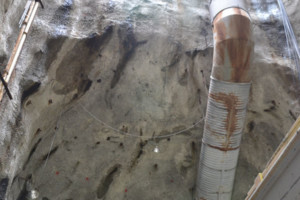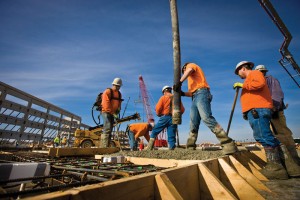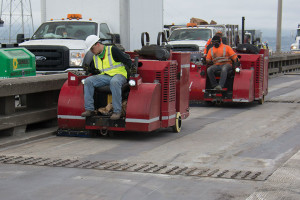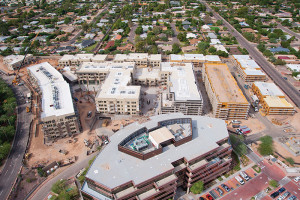Helical piles are subject to special inspections, similar to deep foundations, but engineers have several choices when looking for the best way to install them. Currently, there are no standards for the installation of helical piles. However, helical piles should be installed and inspected in accordance with all relevant requirements listed in the governing building code. …
Review Category : Construction Issues
Mitigating Flooring Issues
Strain is placed on several building materials as construction schedules compress to accommodate building occupancy “as soon as possible.” Add pressures to utilize environmentally responsible products and suddenly traditional construction practices have the potential for problems. …
Post-installed expansion anchors are used to attach fixtures to concrete and masonry. Expansion anchor types include torque-controlled anchors, which must be torqued to expand wedges, and displacement-controlled anchors, which require impact forces on a sleeve or plug to expand wedges. Expansion anchors that rely on torque to expand wedges are referred to as torque-controlled expansion anchors. This article discusses the importance of torque on the installation and performance of torque-controlled expansion anchors installed into concrete. …
Membrane roof systems installed on steel roof decks traditionally result in a uniform transfer of wind (uplift) loads from the roof membrane to the steel roof deck and underlying supporting structure (e.g., steel joists). For example, in a built-up membrane roof system – which has been used commonly in the U.S. roofing industry for more than 125 years – the built-up membrane is continuously adhered to rigid board insulation. …
Have you ever been in a discussion, adversarial or entertaining, with a non-engineer or even an engineer, about what code requirements exist for construction activities? For example, a discussion about the generation of structural calculations for an existing building where the construction does not comply with the permitted construction drawings and, in some cases, with specific code requirements. …
Extending New York City Subway lines requires deep excavations in a congested urban environment while protecting adjacent facilities. The 100-foot-deep Metropolitan Transportation Authority (MTA) No. 7 Line Station excavation, through soil and rock between West 34th and 35th Streets, was no exception. …
After you finish the engineering on a project and it goes out the door, what happens to it? Who is responsible? How will it perform versus the engineering assumptions?
Over the years, the reality of what gets engineered versus what gets constructed has become more concerning. Performing site visits to observe construction configuration and specifics of the contractor’s interpretations of the permitted drawings has been, to say the least, enlightening. …
From Mix to Plant to Placement
Over the past decade, the use of high-strength concrete has gone from the exception to the norm. Uses of concrete strengths exceeding 10,000 psi are easily achievable on any building. The use of cold or hot weather concrete, high-performance concrete, self-consolidating concrete, architectural concrete, etc. is increasingly common, even for small projects. …
Replacing Riding Surface to Maintain Structural Integrity and Durability of an Orthotropic Deck
In 1967, the San Mateo/Hayward Bridge incorporated the United States’ first orthotropic steel bridge deck on a major bridge, winning the American Society of Civil Engineers’ (ASCE) Outstanding Civil Engineering Achievement Award (OCEA). The mile long orthotropic steel deck is included within the six lane wide, two mile long steel high-rise portion of the seven mile long bridge. …
The topic of fire precaution and safety during construction of large buildings is timely and relevant. The frequency and consequence of this type of fire is attracting attention in both public and private arenas. These types of fires may also impact nearby buildings, can interrupt neighborhood business operations, and can have longer-term effects on the surrounding community. Often they result in property damage, have the potential for worker and first responder casualties and injuries, and can have a longer-term effect on the reputation of companies involved. …

